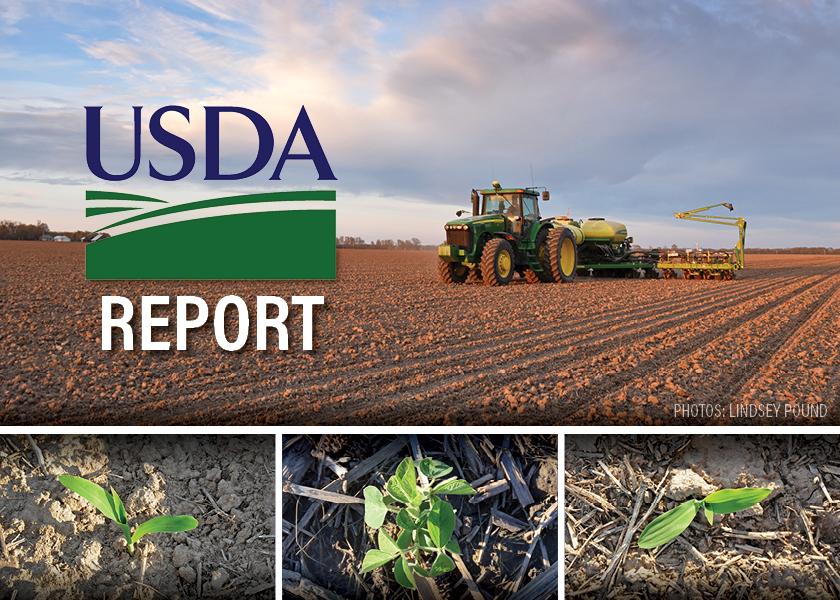How Important Is Each USDA Report?

Missed a recent article by Jon Scheve? Get it sent to you directly every week. Send a request by email: jon@superiorfeed.com
Market Commentary for 3/24/23
May corn finished the week up 9 cents, while May beans were down 48 cents.
Corn export demand remains steady and is trading 37 cents off the lows posted only two weeks ago. If export announcements continue, corn has upside potential.
Beans prices, on the other hand, are down $1.20 per bushel compared to last month. This is largely due to South America most likely having a record crop this year, despite widespread drought conditions in Argentina. Reports indicate that Brazil’s beans may even be priced low enough to be imported into the US.
Stocks & Acreage Report
The upcoming March 31st USDA report is highly anticipated for several reasons:
- It provides the estimated remaining stocks stored on farms and at commercial elevators.
- It shows how tight stocks are and if price rationing is necessary.
- It includes the first official planting intentions estimate for the upcoming year based upon surveys filled out by producers in early March.
Last month the USDA Economic Outlook Forum estimated 91 million corn acres and 87.5 million soybean acres will be planted in 2023. However, these are budgetary derived numbers and not based on actual producer surveys. Therefore, the market will be comparing these estimates with other private estimates until the March 31st report. Prices will then adjust accordingly.
How Important Is Each USDA Report?
Many people agree the end of March report is important, which it is. But, how does it compare with other reports throughout the year? Which ones historically impact the market the most and least over the year? Below I ranked each of the 15 report days in order of importance, based upon my opinion, and provided rationale for why and how the market and farmers can be impacted by each one.
#1 – End of June Stocks and Planted Acreage Report
This is the most important report day of the year because it provides the first real estimate of the final planted acreage for the upcoming harvest. This is significant, because a million-acre swing of one crop is equivalent to a 2 bushel per acre national yield change. The report also includes estimates of old crop supply remaining in storage and expected upcoming carryout.
#2 – August WASDE (World Agriculture Supply & Demand Estimates)
This report usually provides the first glimpse of expected national yields after corn pollination is complete. This combined with the planted acre estimates from the end of June acreage report gives the market a clearer picture of next year’s supply potential.
#3 – January Report
Despite yield estimates from August through November, this report shows final national yields for the fall harvest. Plus, it includes the first stocks report of the new crop.
#4 – End of March Planting Intentions and Stocks Report
As stated above, this report estimates the remaining stocks, how tight supply is, and the first official planting intention estimate. While important, this report did not make my top 3 because ultimately weather will dictate which crop gets planted. Plus, any large price change after the report could incentivize some producers to switch intended acres in April or May.
#5 May WASDE Report
This report provides the first look at new crop demand and yield potential, which provides a baseline the market will work against for the year. After this, going forward, the perceived weather variability and its impact on supply and demand generated from this report will cause fluctuations in the market.
These top 5 reports have by far the biggest impact on the market. The next 9 report days may have some impact on the market, but it is usually much less.
#6 – July WASDE Report
This provides updated stocks and planting acreage mix from the end of June report. There are rarely yield changes in this report, and when there are it only makes the August report more anticipated.
#7, #8, #9 – September, October & November WASDE Reports
These 3 are combined because while yield trends are updated monthly from the August report, they are not generally big market movers. Even if there is a big adjustment in one of them, or a trend is spotted, the January report will still overshadow them all.
#10 – April WASDE Report
This report is overshadowed by the March 31st Planting Intentions and Stock Report because it does not include new crop supply and demand figures yet like the May report. That is why it remains lower on the list.
#11 – June WASDE Report
This report may have minor supply and demand adjustments for both old and new crop, but it’s too early for weather to impact and change new crop yields. The market will instead be focused and waiting for the biggest report of the year at the end of June.
#12 – September Stocks Report
This is the final stocks report of the old crop. It should be a bigger report day, but the numbers provided have already been anticipated and much of the report is a look backward. And since it is a futures market, there is generally little for the market to react to in the report unless there is a major surprise.
#13, #14, #15 – March, February, December WASDA Reports
These 3 reports provide few changes to overall US supply and demand estimates. However, as South American competition for global exports increases, these reports may become more important to price direction in the future. Still, they will not likely ever over-take The Big 5.
Importance of USDA Reports
I expect some may disagree with my order for a variety of reasons. For instance, speculators and day traders may think every report comes with new opportunities and risk adjustments. Others will complain that USDA reports are a joke or useless. However, it is important to remember that most market participants DO care what the USDA says and nearly all the ag economy revolves around the information provided in these reports. That is why it is important to pay attention to them, know which ones have the most impact on the market, and what to expect from each one.
Looking Forward
On Friday at 11 AM CST the 4th most important report of the year will provide the market with some new information that may or may not impact prices. The last 2 March 31st reports had big moves for corn and beans, but in the previous 8 years corn moved less than 15 cents. Beans had 7 years of price movement less than 25 cents.
After the report is published this week, everyone will shift their focus back to Chinese exports for another 1-2 months, until weather variability becomes the biggest market factor in price movement again.
Want to read more by Jon Scheve? Check out recent articles:
Did Old Crop Corn Finally Hit A Floor Price?
Have Corn Prices Dropped Too Fast Too Early?
How Will The Market React When Farmers Start Focusing On 2023 Planting?
Will Corn Futures Follow A Historical Trend And Rally Before The End Of April?
How Do Grain Cancellations Work?
Jon Scheve
Superior Feed Ingredients, LLC







